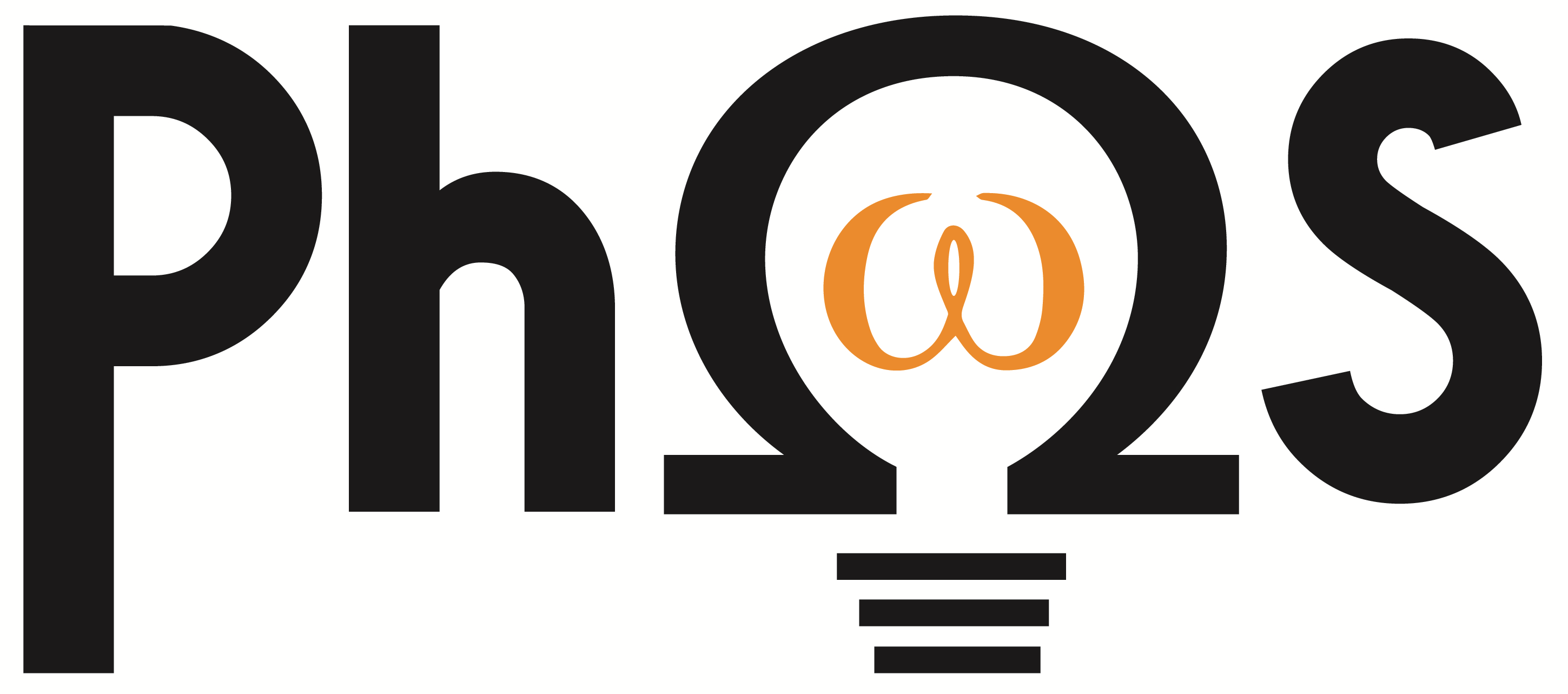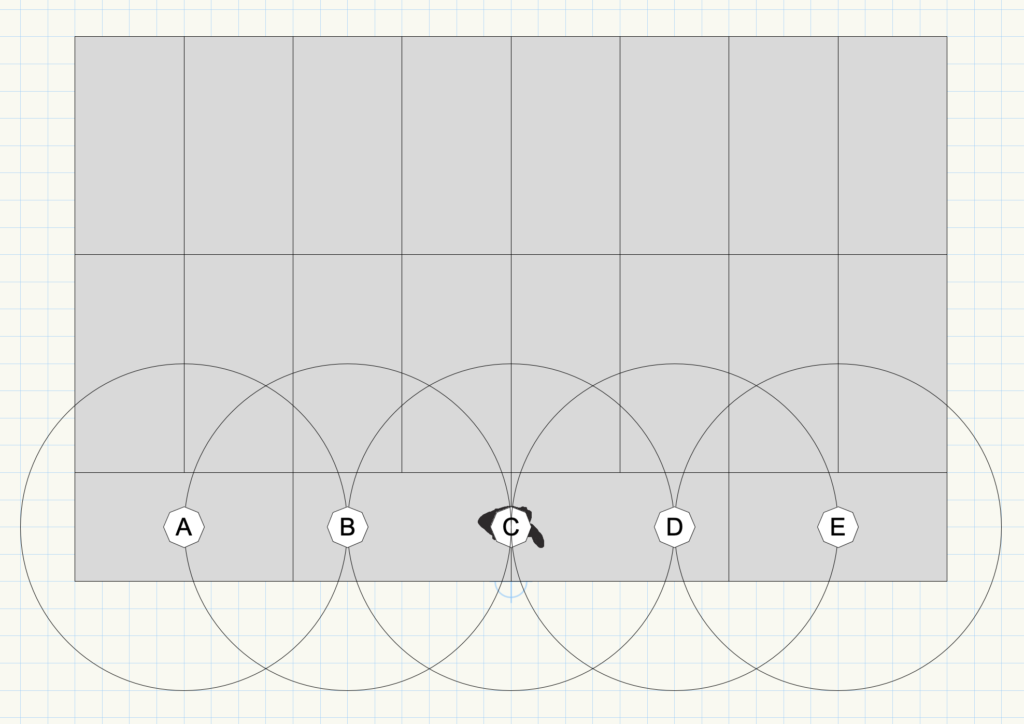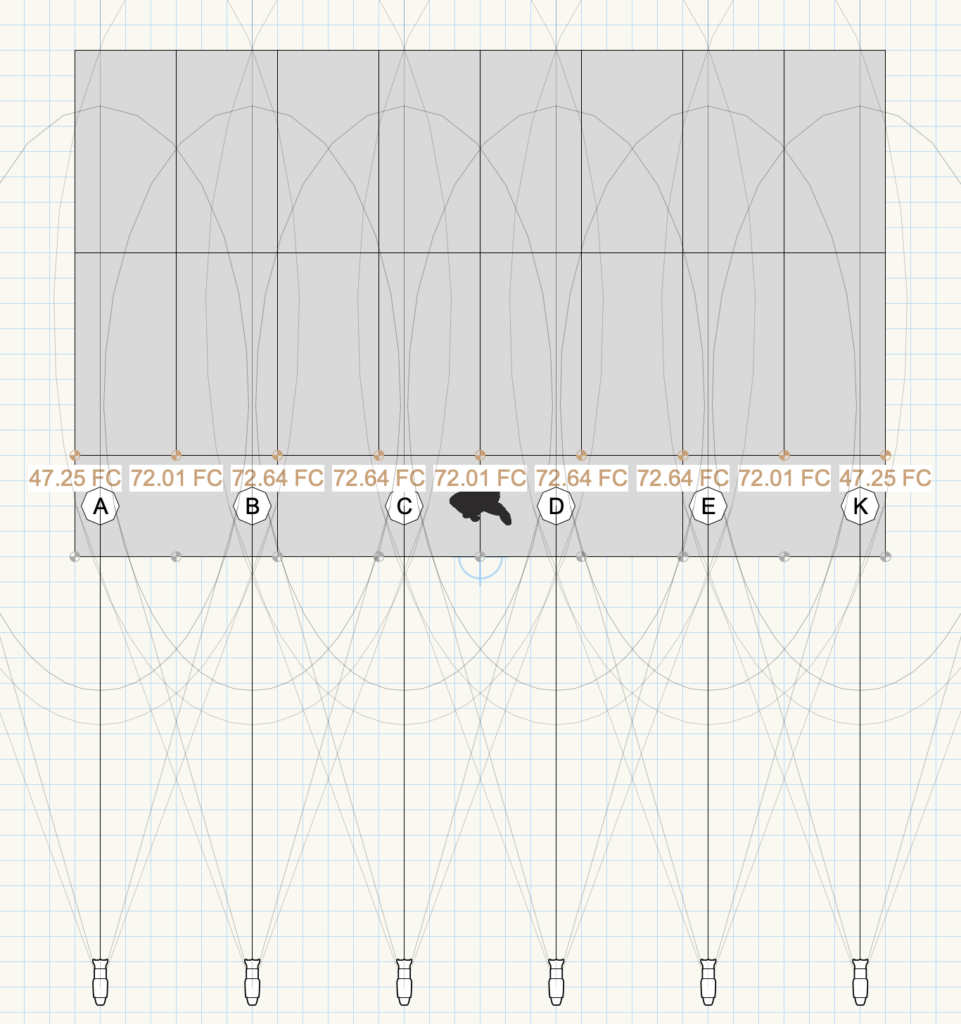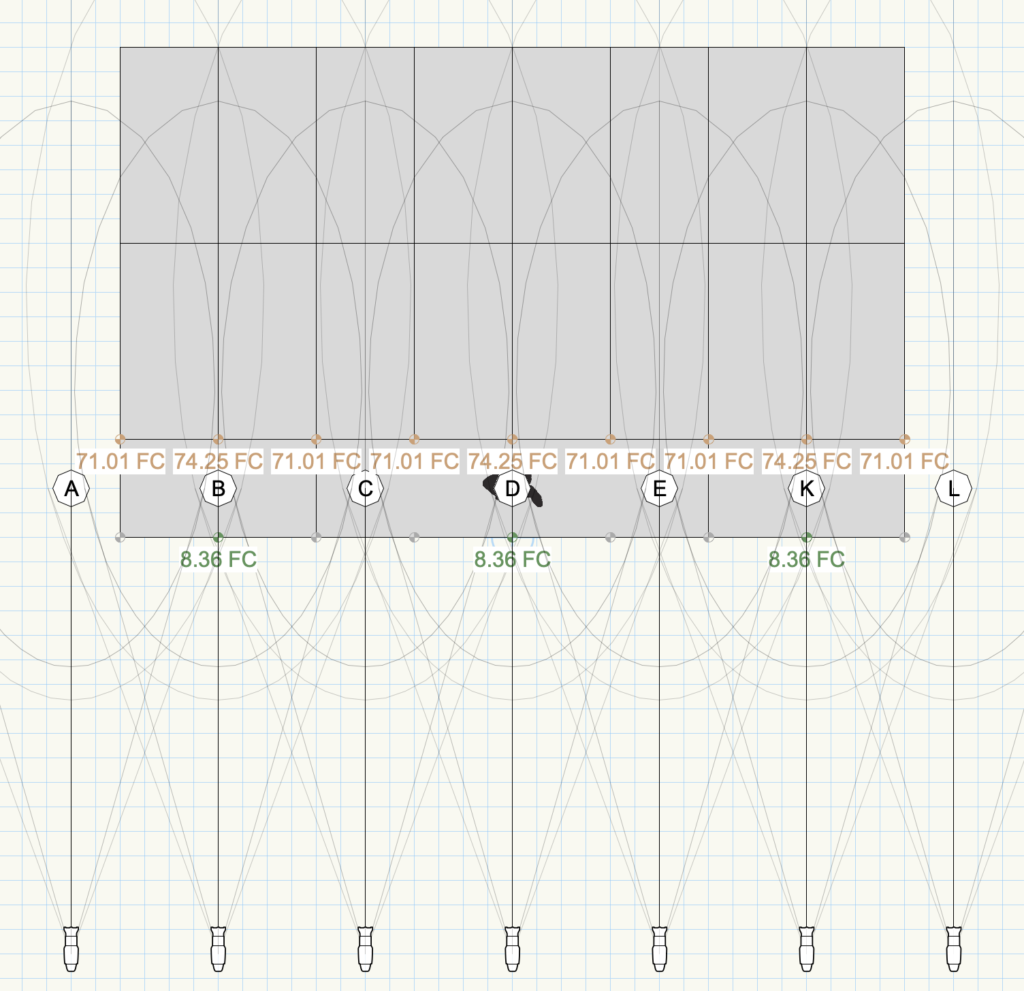Zones: Steven Shelley and Slinkies
One of the most common questions I come across is how many lights are needed on a stage. There’s a bit of a misnomer here in that we don’t light stages. We light people. Those people are generally on stages or other platforms. This distinction is important because if we have a 40′ wide stage but are only expecting a speaker at a podium, then the width of the blocking is only about 6′ (“blocking” is a term from theater that describes the positioning of actors on the stage). The fact that we light people is one of the most important factors in how we design our lighting. From that fact stems all of the math by which I do the calculations throughout the rest of this article.
Before we get into that, let’s describe a zone, i.e. a pool of light. On this subject, I tend to follow Steven Louis Shelley, as he describes in A Practical Guide to Stage Lighting. That guide is geared toward theatrical lighting and is exceptionally thorough, covering almost every possible combination of angles. While I’m not a theater LD, his human-centric lighting theory has been an exceptional foundation for me as I light any stage, especially when I need an exceptionally even stage wash for cameras.
Humans First: The Measurement that Defines the Rest
Let’s start with one light shining on our subject. Us human folks are generally around 5’5″ – 6′ tall (1.5M – 1.75M). Obviously, there are really tall folks and really short folks, but these numbers are close enough. Especially because I center my lighting on the eyes, which is where the subject connects with the audience, we want a focus height slightly less than the average height. So, someone closer to 6′ tall might have their eyes closer to 5’6″. I often use 5’6″ as an eye height, but I’ll often use 6′ as a cleaner number that’s easier to do math in the head with. Plus there’s an idea of margin that we’ll expand upon later.
We could in one sense put a 6′ circle of light around someone much like with a follow spot, but there are some limitations to this when it comes to lighting a stage. Spots are a whole different beast, but most general lights used for a stage wash have a hot spot. Here is the iso-illuminance for a Source Four 36º EDLT:
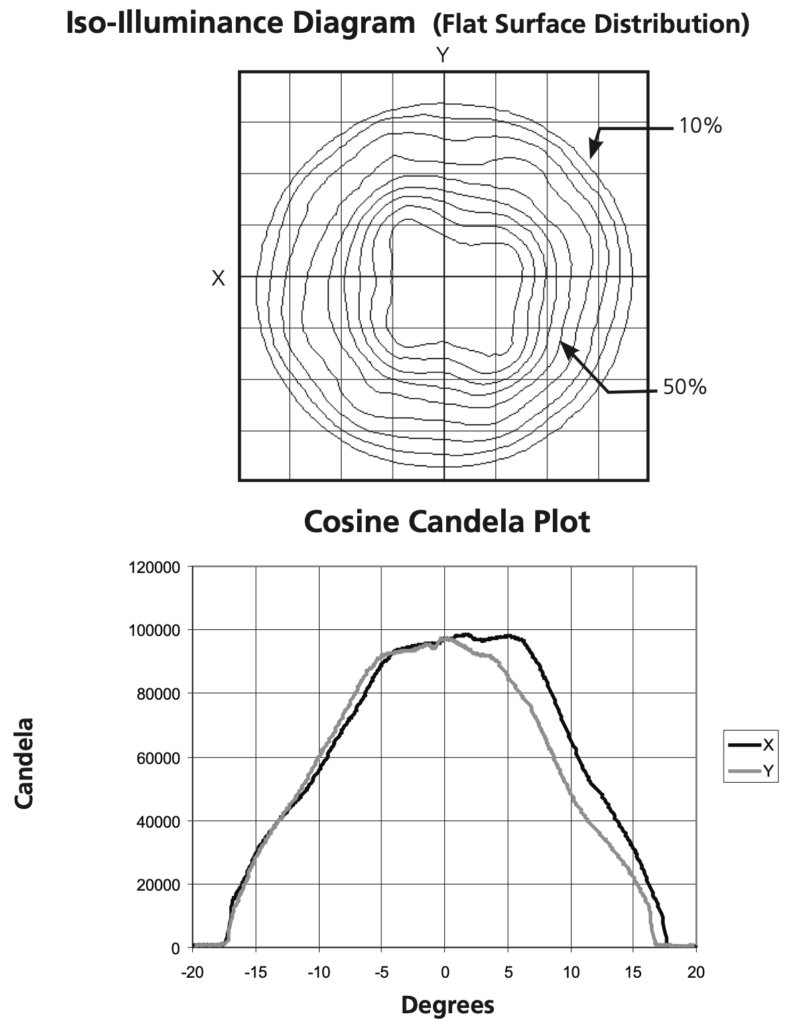
Some terminology to be familiar with is beam and field. When most fixtures state their beam spread, it is only nominal. For instance, this 36º lens tube has a beam angle of 23º and a field angle of 33º. Still better than the old way of describing them as 6X4 and other chicanery, although some older LDs swear by it. The field angle is where the light Is 90% of the peak and is what we think of as the circle of light. Some light is lost outside of that circle. The beam angle is where the light is 50% of its peak, as shown in the top diagram.
When we light our human, we want the peak at the eyes, which is in the center of the circle of light. This makes the circle of light around 12′ – 15′. This extra size allows for some margin as the subject can walk forward or backward from the focus point. This gives us a look on the stage as below:
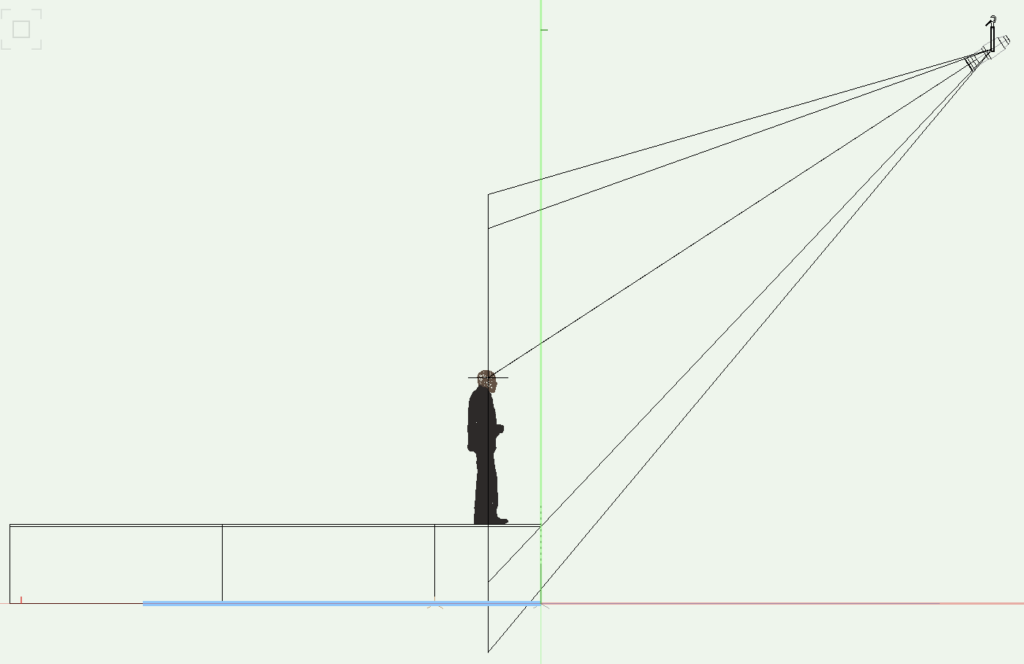
The vertical circle shows that the eyes are in the center 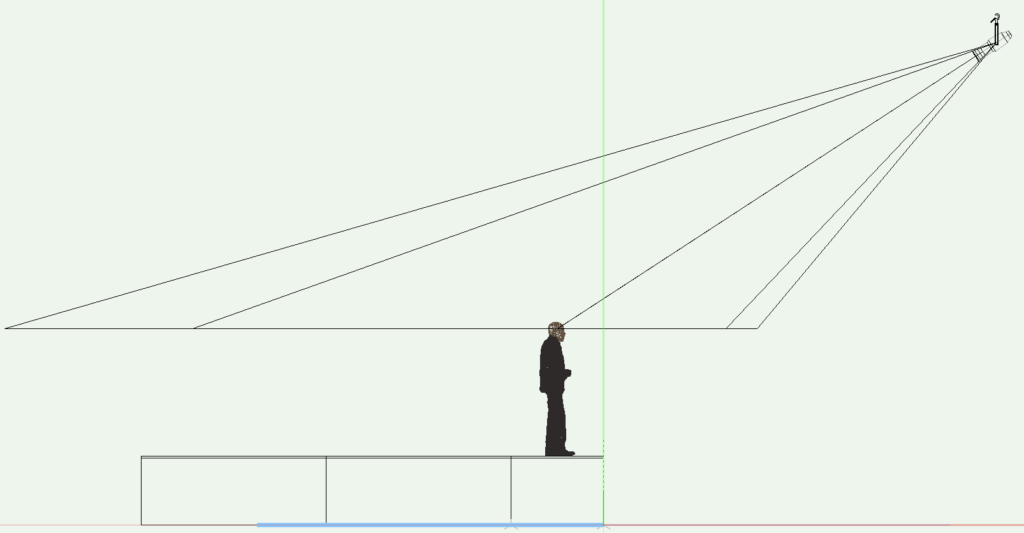
In the horizontal circle we see there is margin to walk forward and backward 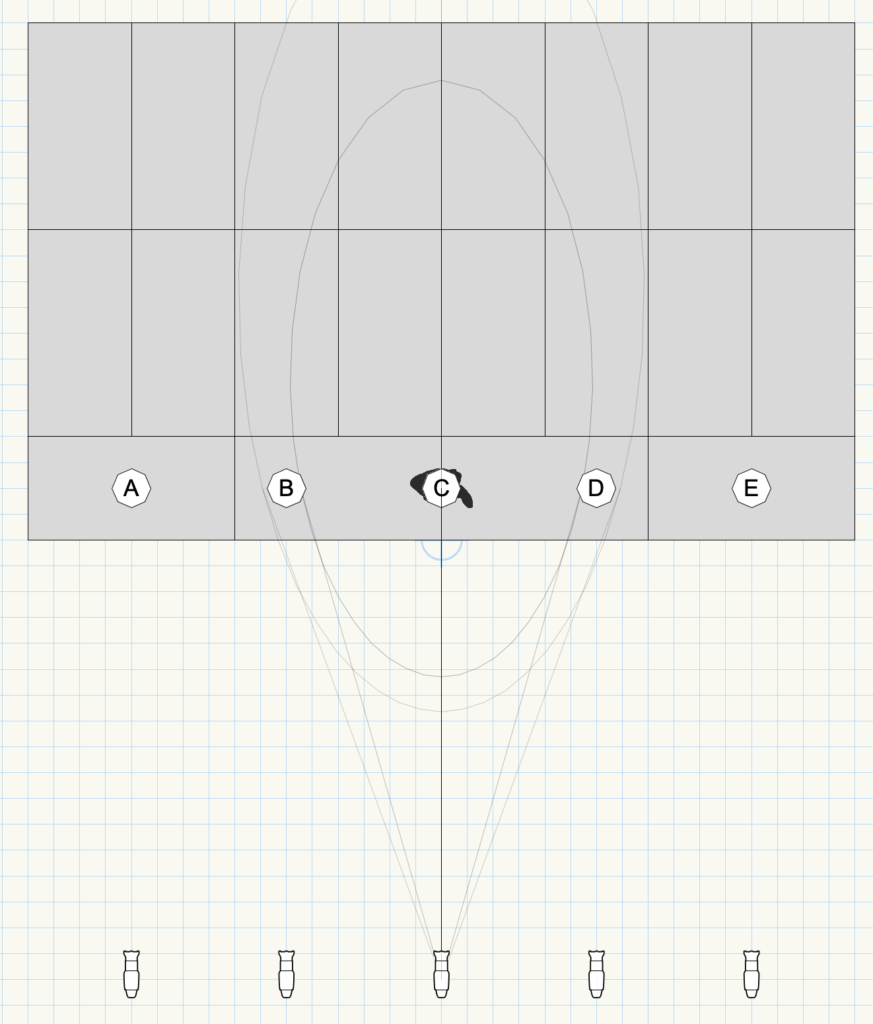
The pool of light extend US to DS elliptically 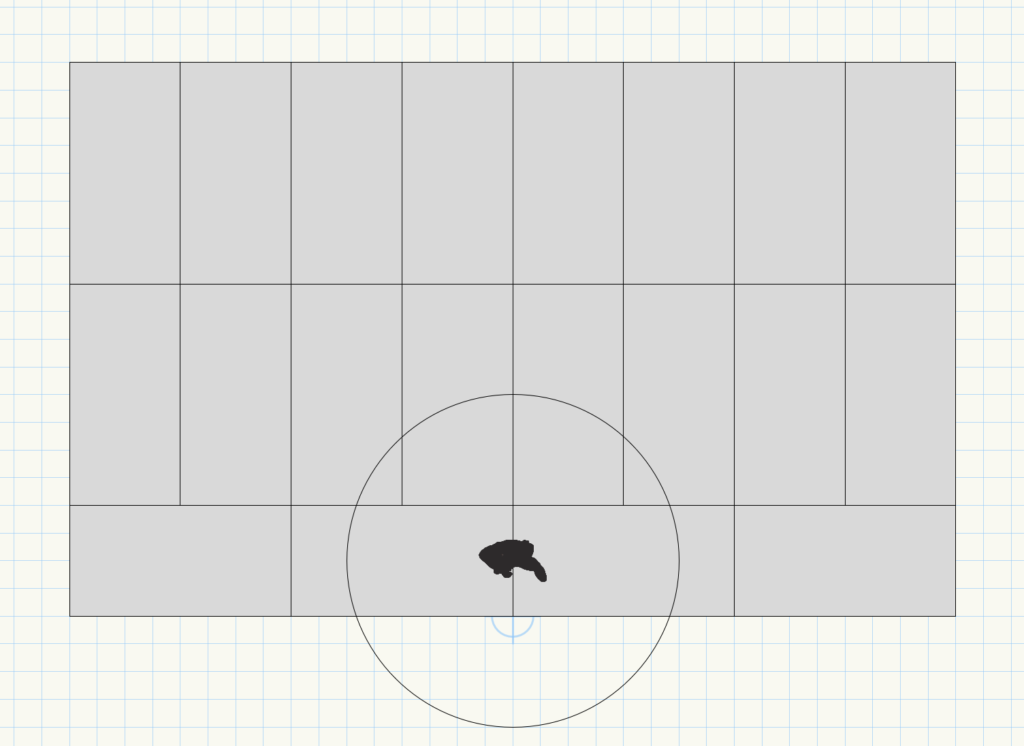
The zone Is indicated by a circle for simplicity
Of course we have a lot of stage left to cover. Naturally that light trails off from the center and in our 36º example, the flat part is only about 10º. We have to find a clever way of creating a wider zone of flat light. Shelley suggests overlapping the pools of light where the beam (not the field) edges meet. The resultant iso-illumance diagram for two lights is shown below.
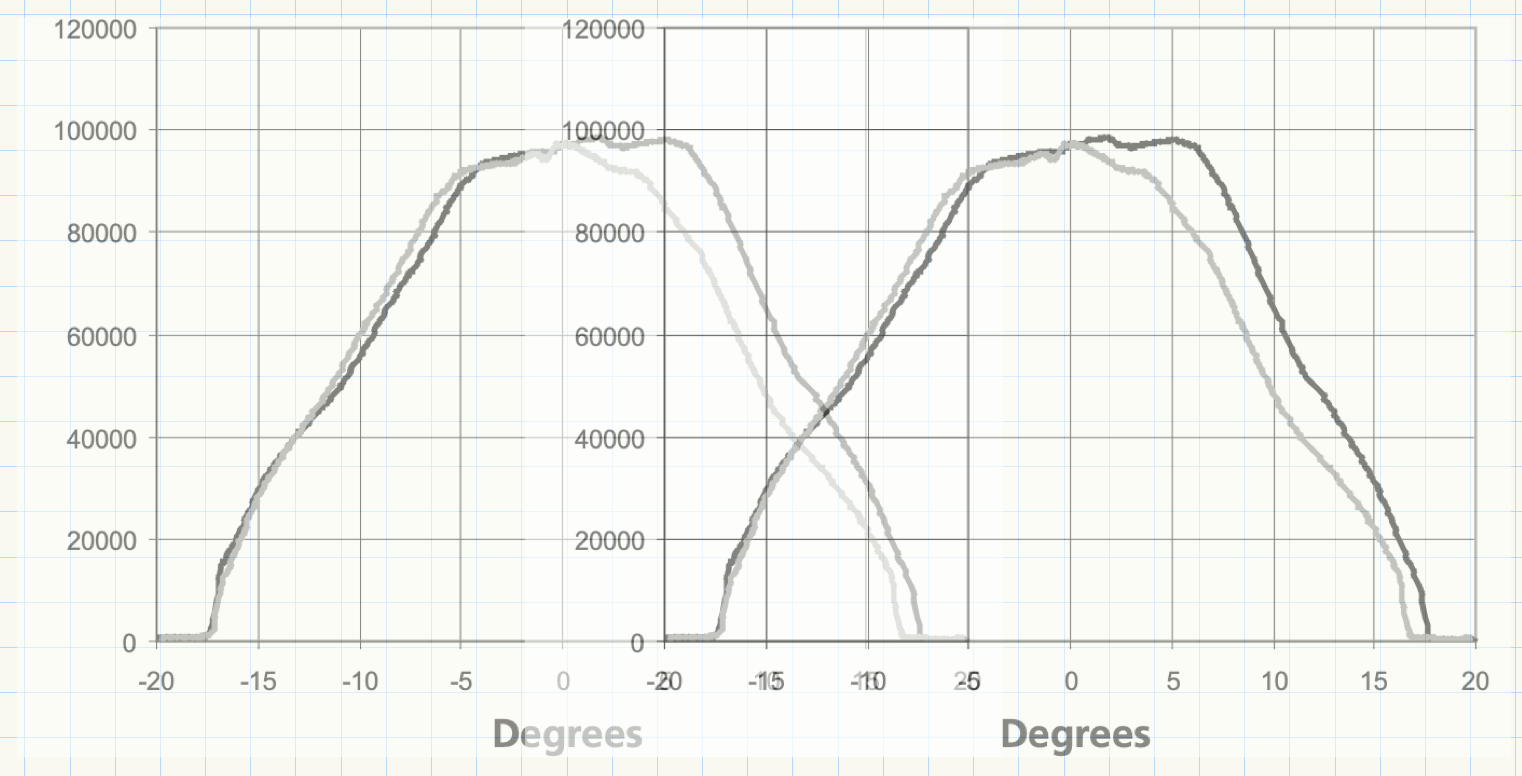
Overlapped at 50% 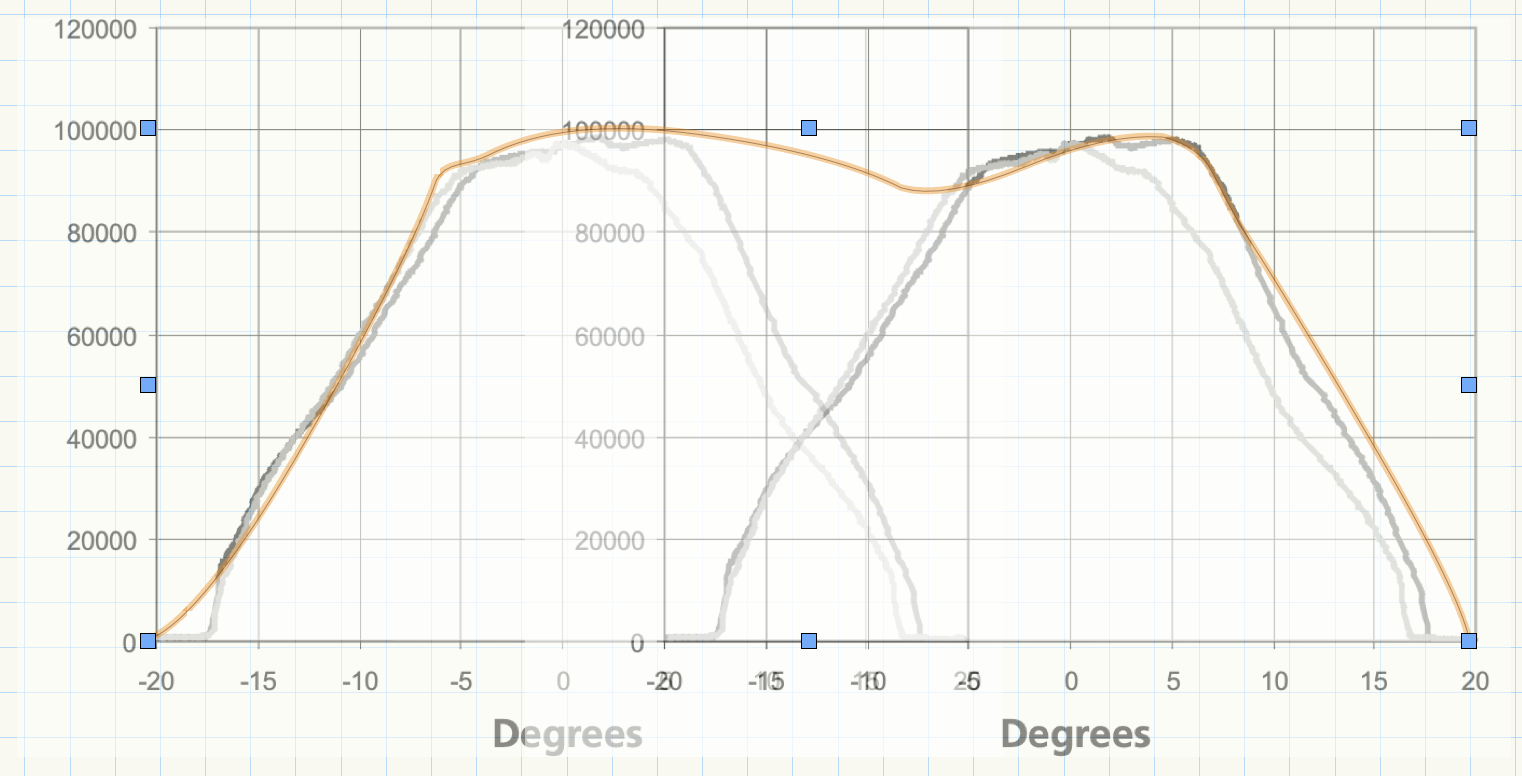
The resultant curve in orange 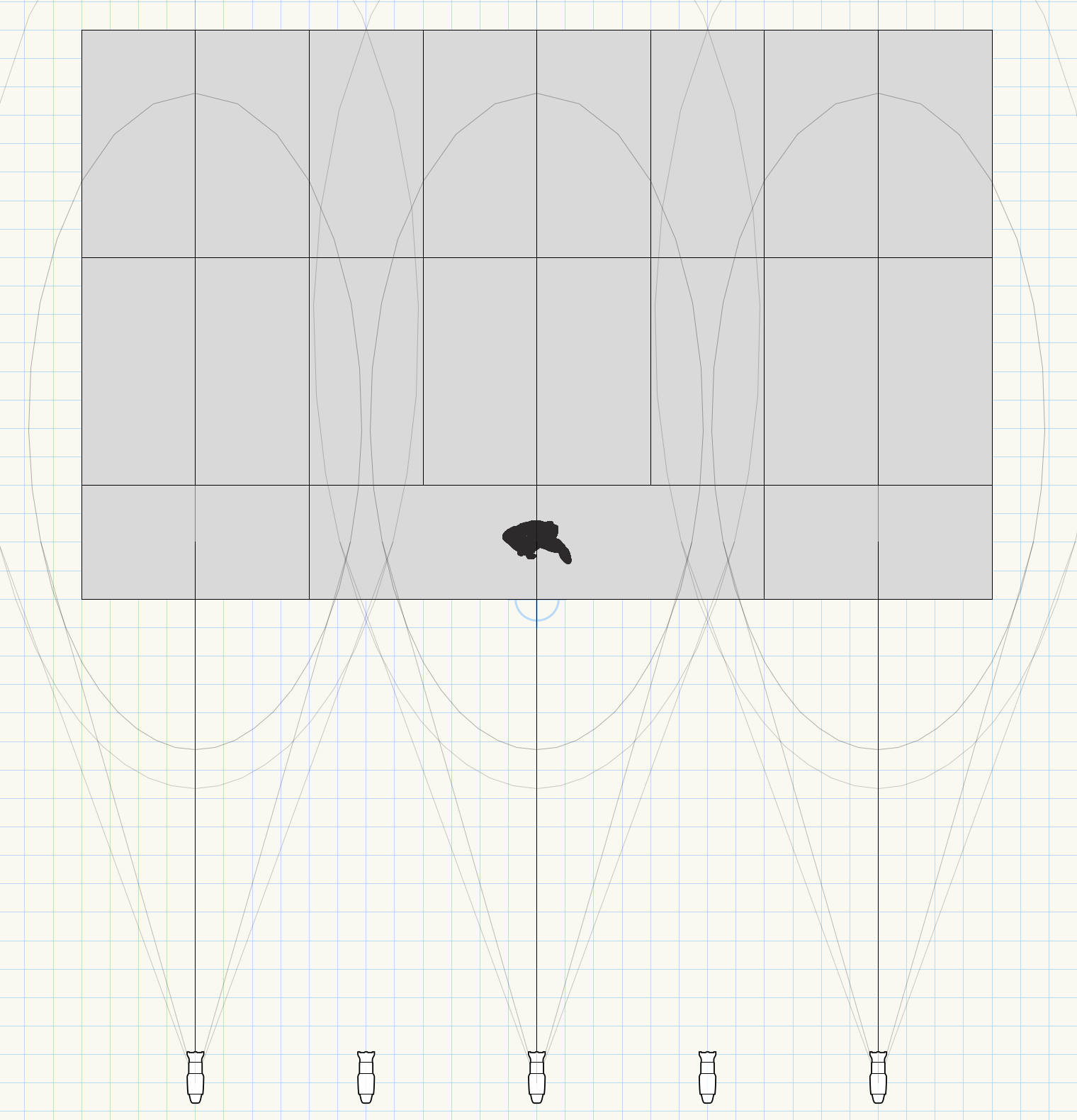
Three pools of light at the overlap point. The inner ellipse is the beam edge and the outer ellipse is the field edge. Note how the beam ellipses a very close to meeting edge to edge
One result is that adding these two fields of light yields a flat area three times the width of one light. The whole is greater than the sum of its parts. But we see that because the pools of lights have a curvature that creates dead zones near the point of overlap farther US and DS. If a speaker were to pace back and forth across the stage, the eyes may stay even but the rest of the body may pass through dimmer areas.
The solution is to overlap these zones with another set of zones, where the peaks of one set lie at the point of intersection of the other zone. So, if the central zone focus point is on the center line, the next zone is at 6′. This is also where the edge of the central zone meets the edge of the next zone, which is centered at 12′. Expanding this to 5 zones we have the following:
These overlapping circular zones is where Shelley derives the term Slinky method. The overlapping circles give the appearance of a stretched-out Slinky. Keeping in mind that the stage decks in these diagrams are 4’x8′, wee see that we now have lights hitting the entire 32′ width of the stage. However, adding in the photometric readings in the second picture directly above, we see that we only have an even reading between 70 fc – 75 fc in the central 16′ – 20′ of the stage. If you’re not expecting someone to use the full width of the stage but rather to stay near the center, this may be enough. But what if we expand this to six and seven zones?
The diagram gets a little cramped at this point, but we see that the width of the stage that falls in the tight tolerance of 70 fc – 75 fc has increased. With six zones, we are nearly the full width of the stage. With seven zones, the centers of the outside two actually offstage, we have even coverage over the entire width. If you’re expecting a speaker to stand toes to the edge, as some speakers are wont to do, you may need to apply that extra width, especially if there are stairs leading up to the stage that someone may use to come up. Just be careful of any architectural elements or screens that you don’t want to hit.
So, my stage is x feet wide. How many lights do I need?
This is really the question isn’t it. Since humans fall within a specific size range, we can almost formulaically calculate this. The equation I use is x=(n/6)+1, where x is the number of zones and n is the width, in feet, of the stage [x=(n/1.75)+1 for you metric folk, by which I mean the rest of the world]. I’ll typically round n to the nearest multiple of 6—rounding up if I need complete edge-to-edge coverage with spillover off the stage and rounding down if I’m okay with some trail off near the edges. So, for our 32 foot stage in the examples above, the equation yields x=(30/6)+1=6 when rounding down for some trail off and x=(36/6)+1=7 where we are edge to edge with significant spillover. Your blocking will determine the blocked width of the stage.
This math only tells you how many zones you need. How many lights you need is an entirely different question, but it is tied to the first. You need to decide how many lights you want per zone. See my discussion at Lighting Angles for a discussion on this topic. If you just need basic visibility, the one light per zone is enough. If you want a very a very robust lighting setup, I always shoot for four lights per zone. I’ve seen as many as six. Really, the common determinant is most often budget.
So, we take that answer x and multiply it by how many lights we want per zone. If I could do a 32′ wide stage with seven zones and four lights per zone, I would never complain. However, twenty-eight lights might be a lot to ask for. I may only have the budget for five, in which case I do front lighting only but really get it good for those central five zones, trailing off near the edge. At the end of the day, my starting point, based on the size of us human people and the math that result from our size, is that equation, x=(n/6)+1.
This is especially great when you have to come up with a stage design real quick. I’ve literally had calls where I am expected to have a stage wash up within an hour. I only need the ask the question of how much width of the stage is being used and I can quickly calculate exactly how many zones I need and then how many lights I can use to fit those zones and stay within the budget. We like to think of our craft as an art, but sometimes it can be mathematically and formulaically easy. This is what makes us artisans.
